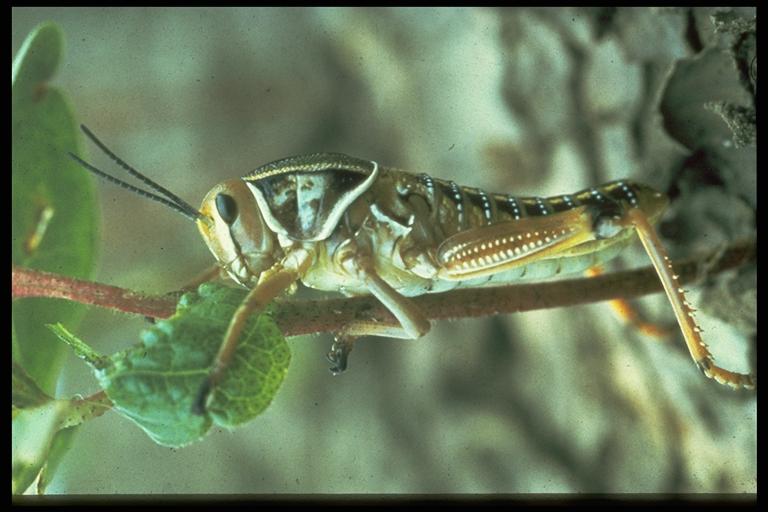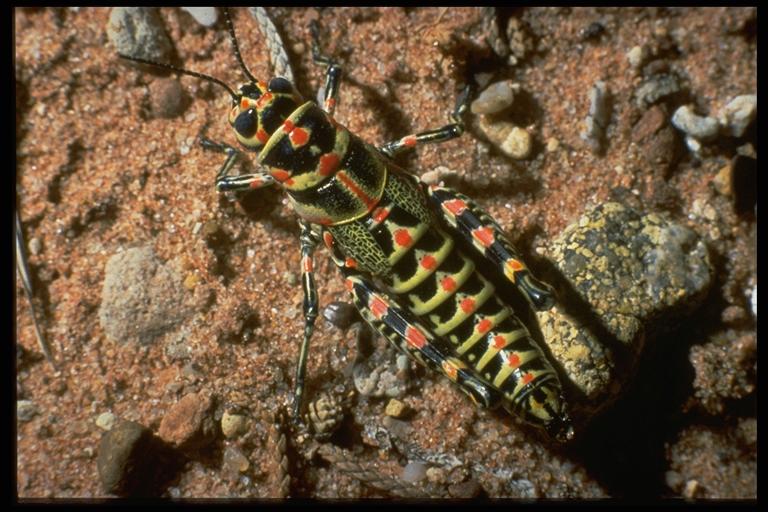
Lubber grasshopper, Brachystola magna (Girard), Photo by W. Sterling.
Common Name: Grasshopper
Scientific Name: Brachystola magna (Girard)
Insect Order: Orthoptera
Description: Adults are large (1-½ to 2-½ inches long) with short front wings (tegmina) and therefore are flightless. The body is reddish-brown and marked with greenish-brown although the tegmina are marked with reddish and black spots and each abdominal segment is marked with a row of light dots. The “rainbow” or “pictured” grasshopper, Dactylotum sp. (Orthoptera: Acrididae) is sometimes confused with the lubber grasshopper.
Life Cycle: Eggs are laid in the ground in pods of about 20 eggs. Wingless nymphs hatch in late spring or early summer and develop through five stages (instars). Adults occur throughout the summer and fall.
Habitat, Food Source(s), Damage: The main food plants of this species are forbs (i.e., sunflowers, blanket flower, ragweed, cotton, lettuce, feverfew), although they will also consume live or dead insects. They are usually found in weedy vegetation along roadways, vacant lots and field margins in areas with rocky or gravely soil.

“Rainbow” grasshopper or “pictured” grasshopper, Dactylotum sp. (Orthoptera: Acrididae). Photo by G. Cronholm
Pest Status: Usually not considered to be a serious pest of grasslands; medically harmless.
For additional information, contact your local Texas A&M AgriLife Extension Service agent or search for other state Extension offices.
Literature: Capinera and Sechrist 1982.